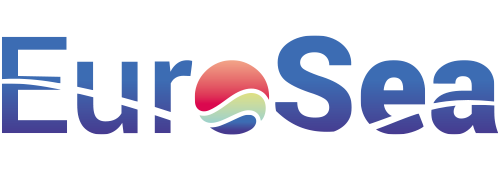
Description
The effort to coordinate and integrate various oceanic observational networks can significantly streamline data flow and fortify the implementation of best practices. This endeavour not only optimizes the collection and dissemination of marine data but also consolidates varied marine observation efforts into a cohesive, more effective system.
Impact During the Project
Networks Traditional State: Prior to network coordination, data might have been siloed within individual networks or platforms, leading to inefficiencies and potential redundancies.
Advancement: Integrated networks promote seamless data flow, with streamlined processes that facilitate faster and more efficient data sharing and dissemination.
Standardized Best Practices:
Traditional State: Diverse observational networks might have operated based on their individual protocols, leading to inconsistencies in data collection, storage, and sharing.
Advancement: The implementation of best practices across the network ensures a uniform standard of operation, resulting in higher data quality and consistency.
Operational Readiness of Gliders:
Traditional State: Oceanic gliders, being specialized observational platforms, might have been in experimental or prototype stages.
Advancement: Achieving a Technology Readiness Level (TRL) of 7 for gliders means that the glider system’s prototype has demonstrated its capabilities in a relevant marine environment, and is now on the cusp of full-scale deployment.
Impact Post Project
Enhanced Marine Observational Capabilities:
Traditional State: Limited coordination between networks might have restricted the scope and scale of marine observations.
Advancement: Coordinated networks, with their integrated platforms and tools, can offer broader and more in-depth marine observational capabilities.
Capacity Development & Knowledge Transfer:
Traditional State: Without a coordinated effort, knowledge transfer and capacity development might have been sporadic or limited to individual network capacities.
Advancement: The emphasis on transferring best practices ensures that expertise is shared and proliferated, leading to widespread capacity development across different networks and regions.
Increased Global Reach & Application:
Traditional State: Individual networks might have had a regional focus or specific niche applications.
Advancement: Integrated and coordinated networks are better positioned to expand their reach, catering to a more global audience and addressing diverse marine challenges.
Advancement over and above State of the Art
The move towards network coordination and integration in the marine observational domain represents a significant evolution from isolated, individualistic efforts to a more cohesive, synergized approach. This shift is emblematic of the growing understanding of the oceans’ complexities and the need for a unified effort to study and protect them. By optimizing data flow, standardizing best practices, and elevating the readiness level of tools like gliders, this initiative is set to usher in a new era of marine observation that’s more comprehensive, efficient, and globally inclusive. The focus on capacity development and knowledge transfer ensures that this advancement is sustainable and continuously evolving, meeting the ever-changing demands of marine research and conservation.
Links and References
Link to D3.9 – Glider network, European coordination: https://eurosea.eu/download/eurosea_d3-9_glider_network_european_coordination-2/?wpdmdl=5536&refresh=650197c682f521694603206
Link to D3.10 – Gliders metadata: https://eurosea.eu/download/eurosea_d3-10_gliders_metadata-2/?wpdmdl=5538&refresh=650197c6a87e41694603206
